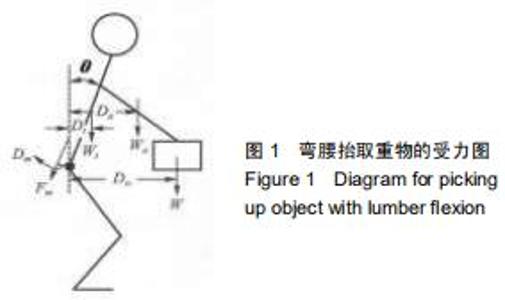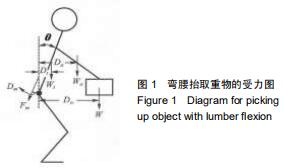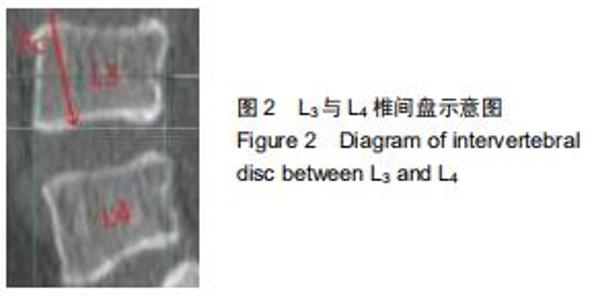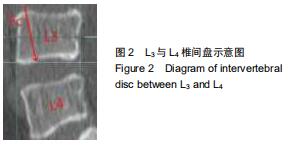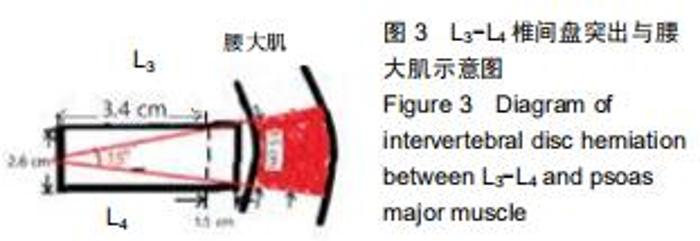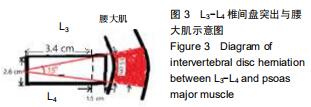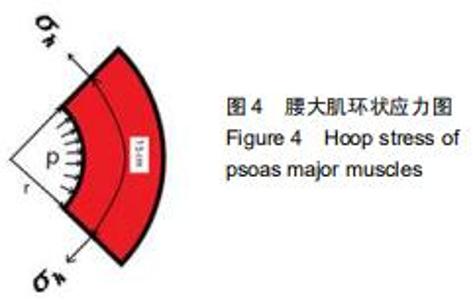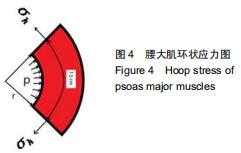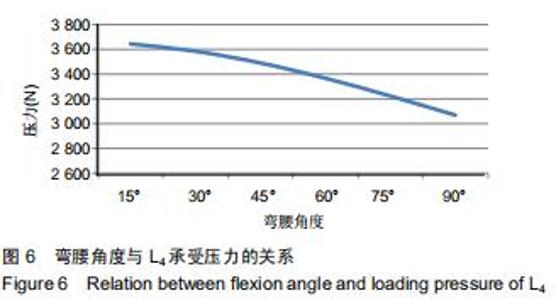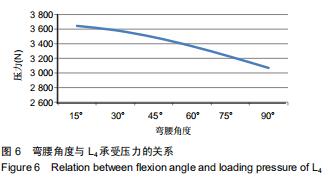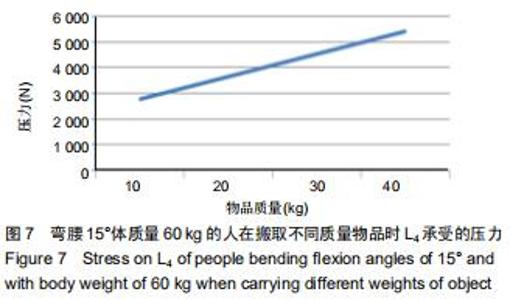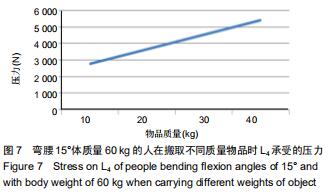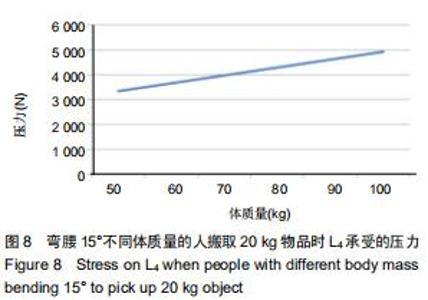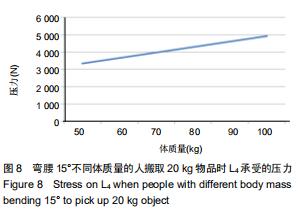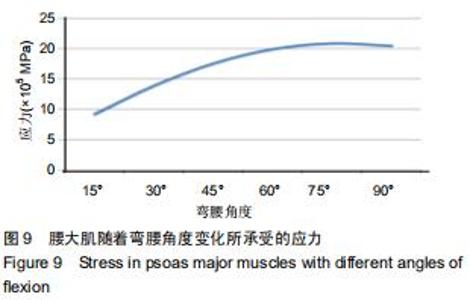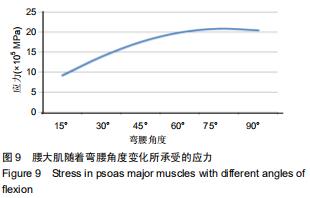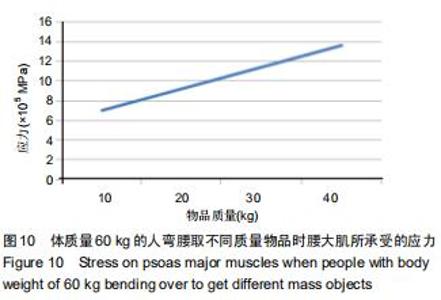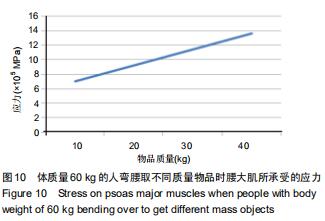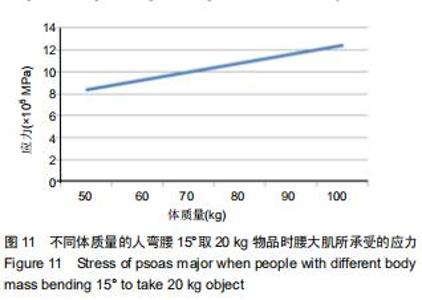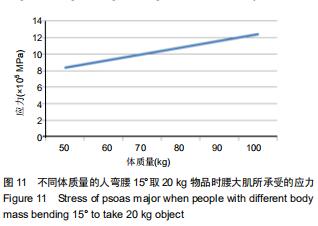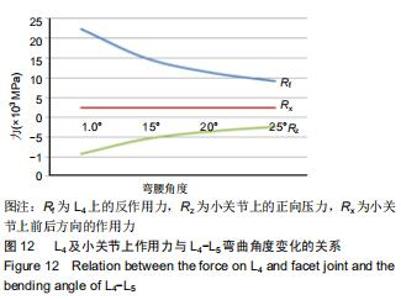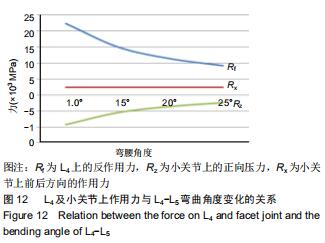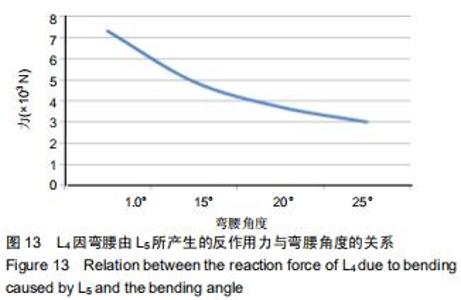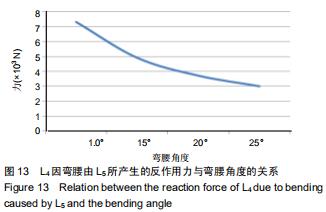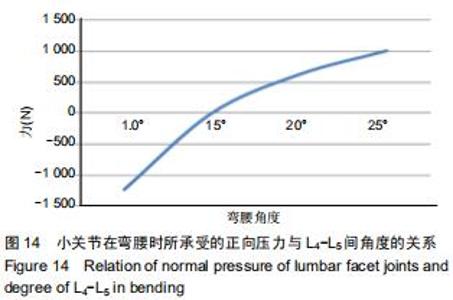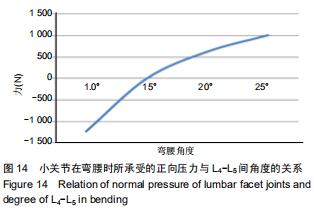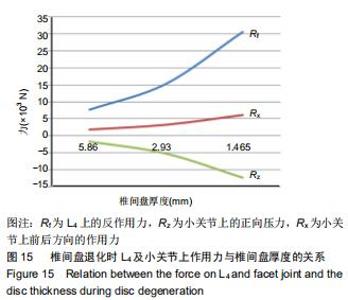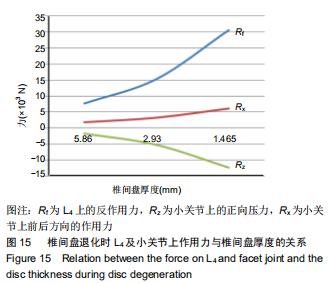Chinese Journal of Tissue Engineering Research ›› 2020, Vol. 24 ›› Issue (33): 5267-5271.doi: 10.3969/j.issn.2095-4344.2848
Previous Articles Next Articles
A biomechanical analysis of low back pain
Young Lihjier1, Ouyang Lin2, Chen Dingwei2, Lin Qi3
1School of Mathematics and Statistics, Minnan Normal University; 2Department of Medical Imaging, 909 Hospital of the Joint Logistics Support Force of Chinese PLA (Institute of Medical Imaging of Medical College, Xiamen University); 3Department of Medical Imaging, First Hospital of Longyan City
-
Received:2019-12-31Revised:2020-01-07Accepted:2020-03-13Online:2020-11-28Published:2020-09-28 -
Contact:Ouyang Lin, Department of Medical Imaging, 909 Hospital of the Joint Logistics Support Force of Chinese PLA (Institute of Medical Imaging of Medical College, Xiamen University), Zhangzhou 363000, Fujian Province, China -
About author:Young Lihjier, MD, Professor, School of Mathematics and Statistics, Minnan Normal University, Zhangzhou 363000, Fujian Province, China Ouyang Lin, MD, Chief physician, Department of Medical Imaging, 909 Hospital of the Joint Logistics Support Force of Chinese PLA (Institute of Medical Imaging of Medical College, Xiamen University), Zhangzhou 363000, Fujian Province, China -
Supported by:the Regional Development Project of Fujian Province, No. 2019Y3007
CLC Number:
Cite this article
Young Lihjier, Ouyang Lin, Chen Dingwei, Lin Qi. A biomechanical analysis of low back pain[J]. Chinese Journal of Tissue Engineering Research, 2020, 24(33): 5267-5271.
share this article
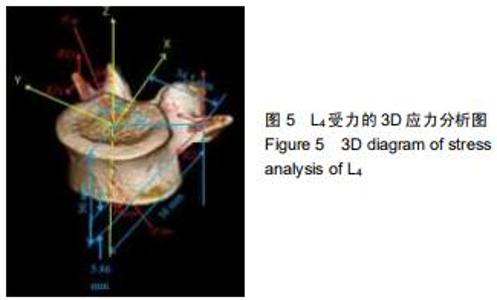
图5所描述的是L4本体,原点定在其上表面形心处,1,2分别表示右与左小关节,x,y,z轴如图所示,σup与σdown分别表示由L3与L5传来的压力,Qup与Qdown分别表示由L3与L5传来的压力与z轴之夹角。值得一提的是由于球窝形关节的假设,1,2均可在x,y,z三个方向自由转动,因此只有x,y,z三个方向的反作用力(R1x,R1y,R1z,R2x,R2y,R2z),而没有反作用力矩(M1x=M1y=M1z=M2x= M2y=M2z=0),而正常情况下R1x=R2x,R1y=R2y,R1z=R2z,由L3传入的力量FC由前述可得,并换算成σup,而在正常情况下,y方向是没有受力的,因此R1y=R2y=0,由3个静力平衡方程式可顺利求算3个未知量σdown、R1x与R1z。 "
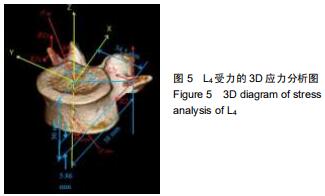
|
[1] LILLRANK A. Back pain and the resolution of diagnostic uncertainty in illness narratives.Soc Sci Med. 2003;57(6): 1045-1054.
[2] CLARK S, HORTON R. Low back pain: a major global challenge. Lancet.2018;391(10137):2302.
[3] HARTVIGSEN J, HANCOCK MJ, KONGSTED A, et al. What low back pain is and why we need to pay attention.Lancet. 2018;391(10137):2356-2367.
[4] DUTHEY B. Priority Medicines for Europe and the World“A public health approach to innovation” .background Paper 6.24 Low back pain.2013:6.24-2-6:24-29.
[5] ADAMS MA, HUTTON WC. The effect of posture on the role of the apophysial joints in resisting intervertebral compressive forces.J Bone Joint Surg Br.1980;62(3):358-362.
[6] PINCUS T, KENT P, BRONFORT G, et al. Twenty-five years with the biopsychosocial model of low back pain-is it time to celebrate? A report from the twelfth international forum for primary care research on low back pain.Spine(Phila Pa 1976). 2013;38(24):2118-2123.
[7] VAN DILLEN LR, MALUF KS, SAHRMANN SA. Further examination of modifying patient-preferred movement and alignment strategies in patients with low back pain during symptomatic tests. Man Ther.2009;14(1):52-60.
[8] BAZRGARI B, XIA T. Application of advanced biomechanical methods in studying low back pain-recent development in estimation of lower back loads and large-array surface electromyography and findings.J Pain Res. 2017;10: 1677-1685.
[9] ALLEGRI M, MONTELLA S, SALICI F, et al. Mechanisms of low back pain: a guide for diagnosis and therapy.F1000Res. 2016;5(F1000 Faculty):Rev-1530.
[10] MURPHY DR, HURWITZ EL. Application of a diagnosis- based clinical decision guide in patients with low back pain. Chiropr Man Therap.2011;19:26.
[11] BEER FP, JOHNSTON ER, DEWOLF JT, et al. Mechanics of materials.McGraw Hill,2012.
[12] LEE KW. Human Factors Engineering.Chuan Hwa BookCo., LTD,2013.
[13] OU-YANG L, LU GM. Dysfunctional microcirculation of the lumbar vertebral marrow prior to the bone loss and intervertebral discal degeneration.Spine(Phila Pa 1976). 2015;40(10):E593-600.
[14] NERURKAR NL, ELLIOTT DM, MAUCK RL. Mechanical design criteria for intervertebral disc tissue engineering.J Biomech.2010;43(6):1017-1030.
[15] WEBER KT, JACOBSEN TD, MAIDHOF R, et al. Developments in intervertebral disc disease research: pathophysiology, mechanobiology, and therapeutics. Curr Rev Musculoskelet Med.2015;8(1):18-31.
[16] VELNAR T, BUNC G, MAVER U, et al. A Review of the degenerative intervertebral disc disease.Br J Med Med Res. 2017;19(3):1-6. [17] LARIVIÈRE C, GAGNON D, LOISEL P. An application of pattern recognition for the comparison of trunk muscles EMG waveforms between subjects with and without chronic low back pain during flexion-extension and lateral bending tasks.J Electromyogr Kinesiol.2000;10(4):261-273. |
| [1] | Hu Kai, Qiao Xiaohong, Zhang Yonghong, Wang Dong, Qin Sihe. Treatment of displaced intra-articular calcaneal fractures with cannulated screws and plates: a meta-analysis of 15 randomized controlled trials [J]. Chinese Journal of Tissue Engineering Research, 2021, 25(9): 1465-1470. |
| [2] | Huang Dengcheng, Wang Zhike, Cao Xuewei. Comparison of the short-term efficacy of extracorporeal shock wave therapy for middle-aged and elderly knee osteoarthritis: a meta-analysis [J]. Chinese Journal of Tissue Engineering Research, 2021, 25(9): 1471-1476. |
| [3] | Xu Feng, Kang Hui, Wei Tanjun, Xi Jintao. Biomechanical analysis of different fixation methods of pedicle screws for thoracolumbar fracture [J]. Chinese Journal of Tissue Engineering Research, 2021, 25(9): 1313-1317. |
| [4] | Jiang Yong, Luo Yi, Ding Yongli, Zhou Yong, Min Li, Tang Fan, Zhang Wenli, Duan Hong, Tu Chongqi. Von Mises stress on the influence of pelvic stability by precise sacral resection and clinical validation [J]. Chinese Journal of Tissue Engineering Research, 2021, 25(9): 1318-1323. |
| [5] | Zhang Tongtong, Wang Zhonghua, Wen Jie, Song Yuxin, Liu Lin. Application of three-dimensional printing model in surgical resection and reconstruction of cervical tumor [J]. Chinese Journal of Tissue Engineering Research, 2021, 25(9): 1335-1339. |
| [6] | Zhang Yu, Tian Shaoqi, Zeng Guobo, Hu Chuan. Risk factors for myocardial infarction following primary total joint arthroplasty [J]. Chinese Journal of Tissue Engineering Research, 2021, 25(9): 1340-1345. |
| [7] | Wei Wei, Li Jian, Huang Linhai, Lan Mindong, Lu Xianwei, Huang Shaodong. Factors affecting fall fear in the first movement of elderly patients after total knee or hip arthroplasty [J]. Chinese Journal of Tissue Engineering Research, 2021, 25(9): 1351-1355. |
| [8] | Wang Jinjun, Deng Zengfa, Liu Kang, He Zhiyong, Yu Xinping, Liang Jianji, Li Chen, Guo Zhouyang. Hemostatic effect and safety of intravenous drip of tranexamic acid combined with topical application of cocktail containing tranexamic acid in total knee arthroplasty [J]. Chinese Journal of Tissue Engineering Research, 2021, 25(9): 1356-1361. |
| [9] | Xiao Guoqing, Liu Xuanze, Yan Yuhao, Zhong Xihong. Influencing factors of knee flexion limitation after total knee arthroplasty with posterior stabilized prostheses [J]. Chinese Journal of Tissue Engineering Research, 2021, 25(9): 1362-1367. |
| [10] | Huang Zexiao, Yang Mei, Lin Shiwei, He Heyu. Correlation between the level of serum n-3 polyunsaturated fatty acids and quadriceps weakness in the early stage after total knee arthroplasty [J]. Chinese Journal of Tissue Engineering Research, 2021, 25(9): 1375-1380. |
| [11] | Zhang Chong, Liu Zhiang, Yao Shuaihui, Gao Junsheng, Jiang Yan, Zhang Lu. Safety and effectiveness of topical application of tranexamic acid to reduce drainage of elderly femoral neck fractures after total hip arthroplasty [J]. Chinese Journal of Tissue Engineering Research, 2021, 25(9): 1381-1386. |
| [12] | Wang Haiying, Lü Bing, Li Hui, Wang Shunyi. Posterior lumbar interbody fusion for degenerative lumbar spondylolisthesis: prediction of functional prognosis of patients based on spinopelvic parameters [J]. Chinese Journal of Tissue Engineering Research, 2021, 25(9): 1393-1397. |
| [13] | Lü Zhen, Bai Jinzhu. A prospective study on the application of staged lumbar motion chain rehabilitation based on McKenzie’s technique after lumbar percutaneous transforaminal endoscopic discectomy [J]. Chinese Journal of Tissue Engineering Research, 2021, 25(9): 1398-1403. |
| [14] | Chen Xinmin, Li Wenbiao, Xiong Kaikai, Xiong Xiaoyan, Zheng Liqin, Li Musheng, Zheng Yongze, Lin Ziling. Type A3.3 femoral intertrochanteric fracture with augmented proximal femoral nail anti-rotation in the elderly: finite element analysis of the optimal amount of bone cement [J]. Chinese Journal of Tissue Engineering Research, 2021, 25(9): 1404-1409. |
| [15] | Du Xiupeng, Yang Zhaohui. Effect of degree of initial deformity of impacted femoral neck fractures under 65 years of age on femoral neck shortening [J]. Chinese Journal of Tissue Engineering Research, 2021, 25(9): 1410-1416. |
| Viewed | ||||||
|
Full text |
|
|||||
|
Abstract |
|
|||||
